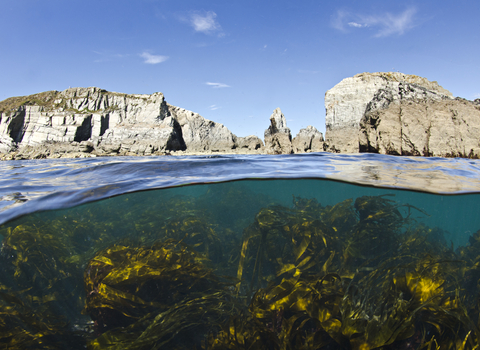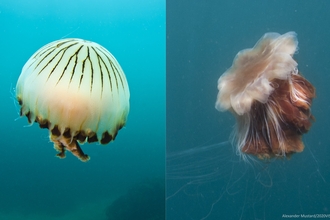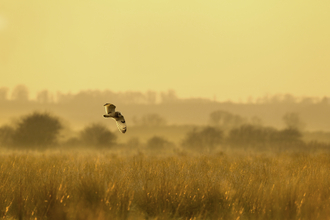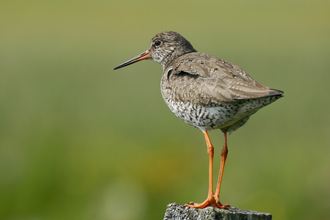Sea Urchins
Sea urchins are echinoderms, related to starfish, sea cucumbers and brittle stars. Their scientific name "Echinus" comes from the Greek word for hedgehog - it's easy to see why with all those spines! But what species live in UK waters and how do you tell them apart? Here’s our guide on identifying 3 common species of sea urchin found around our coasts.
Edible (Common) Sea Urchin
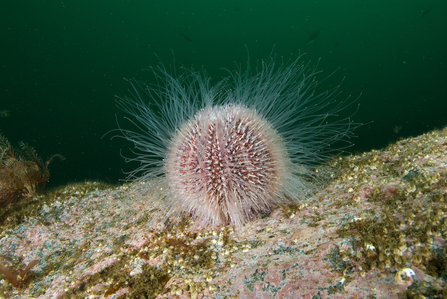
Paul Naylor
The edible sea urchin is the largest sea urchin found around UK shores reaching up to 15 cm in diameter. This sea urchin is a spherical shape and typically pinky-purple in colour although they can also be red, green, or yellow. When they die, the sea urchin will drop its spines leaving only their shell, known as a teste. This teste will also be a pinky-purple colour with 5 clear bands, making a star-like pattern. You can sometimes find this spineless ‘ball’ washed up on beach but be careful, they are very fragile.
Edible sea urchins are usually found on subtidal rocky reefs which are permanently underwater. Here they graze on algae covering the rocks. They play an important role in the ecosystem by providing algae-free areas for the larvae of other species to settle.
Like all sea urchins and other echinoderms, the edible sea urchin has tube feet which help them move around rocks and stop them from being washed away. For the edible sea urchin, these tube legs can be much longer than their spines.
Green Sea Urchin
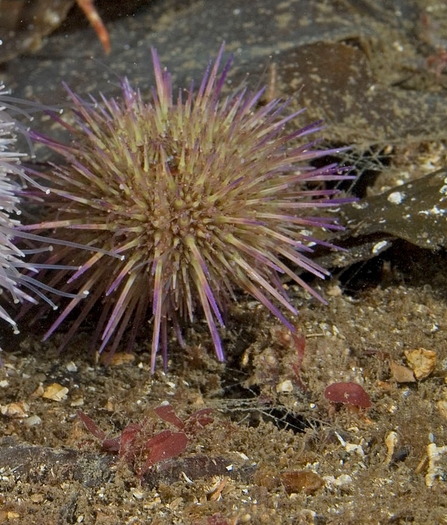
Paul Naylor
The green sea urchin is much smaller than the edible sea urchin, typically 4 cm in diameter- about the size of a golf ball. Unlike the edible urchin, the green sea urchin has a slightly flattened shape. As the name suggests, this sea urchin is green but has spines with a distinctive purple tip. When they die and drop their spines the teste left behind is also green.
Unlike edible urchins which are a subtidal species which means they are always found underwater, the green sea urchin can be found intertidally- the part of the shore that gets exposed as the tide goes out. They are often attached to sugar kelp but are also found underneath rocks and stones. Sometimes you might see this sea urchin covered in small rocks held in place by its tube feet as a form of camouflage.
Sea Potato
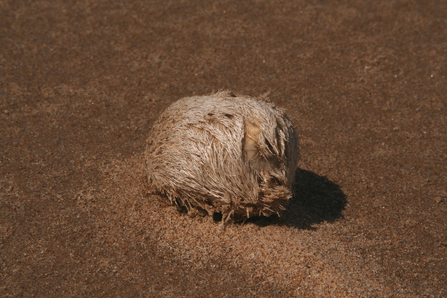
Julie Hatcher
Sea potatoes are very easy to pick out from a line-up of sea urchins. Instead of a teste covered in upright spines, a sea potato’s spines are backwards facing and much finer, resembling fur! These sea urchins are slightly bigger than green urchins with a diameter between 6-9 cm. They are a brown colour when alive to help them stay camouflaged in sand and mud.
If you come across a dead potato on the shore, they are still easy to identify. The shell left behind after the animal dies is recognisable by the heart shape and its dull white colour. These testes are also very delicate so be careful if you pick one up to inspect as they break easily.
You will rarely see this species alive, even if diving, as they are an infaunal species meaning they live in the sediment. They burrow to about 8cm deep in muddy and sandy sediments.

